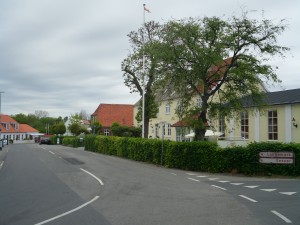By George Harvey
Samsø is an island off the northeastern coast of the mainland part of Denmark. It is about 43 square miles and has a population of about 4000. It is well known for its strawberries, and people from elsewhere in Europe have berry-picking vacations there. It is also known for new potatoes that are considered a delicacy in Parisian restaurants and sometimes fetch prices upwards of $100 per pound.
In 1997, Samsø won a contest by the Danish government, making it the focus of an effort to bring an island to 100% renewable power. This gave the islanders the benefit of some support from the central government, but did not provide all their financing. They did much of that part themselves.
Work began in earnest eight years ago. At the time, 100% of energy in Samsø came from imported fossil fuels. Islanders were emitting 11 ton of carbon dioxide per capita each year, one of the highest rates in Europe. Money to pay for the fossil fuels was flowing out of the community as fast as money to buy strawberries and potatoes was coming in.
Since that time, 11 onshore and 10 offshore wind generators have been installed. Nine of the onshore turbines are owned by local farmers, with the others owned by co-ops. Offshore turbines provide power to offset fossil fuels imported for vehicles, though ultimately, vehicles should be switching to local fuel sources.
Nearly two-thirds of all buildings are now heated by three district heating systems, powered by locally grown straw. Other buildings get solar heat, biomass from straw or wood pellets, or use ground-source heat pumps.
Now, two years ahead of schedule, Samsø is arguably 100% renewably powered, with energy exports exceeding imports and offsetting remaining fossil fuel usage by vehicles. In eight years, the island has switched from one of the most heavily dependent places in Europe, with one of the largest per capita carbon footprints, to one of the most independent, with carbon emissions among the smallest.
NIMBYism is not a problem unique to English-speaking lands. Early on, windpower was the object of opposition. Soren Hermansen, a local farmer who teaches environmental studies, made it a personal task to make sure everyone understood the nature of both the problems the world is facing and the solutions the islanders could implement.
Eventually Hermansen understood that NIMBYism can be overcome by engaging people. The benefits of being able to be part of cooperative ownership of the facilities, saving money on energy, were clear.
In time, other benefits became clear, too. Permanent jobs, new businesses, and increased tourism all brought new income to the island. In 2007, the Samsø Energy Academy opened, providing renewable energy research, education, and training. The academy has exhibits and classes for people from other places. Now the islanders, who have become rather expert on renewable power, can share their knowledge with visitors.









Leave a Reply